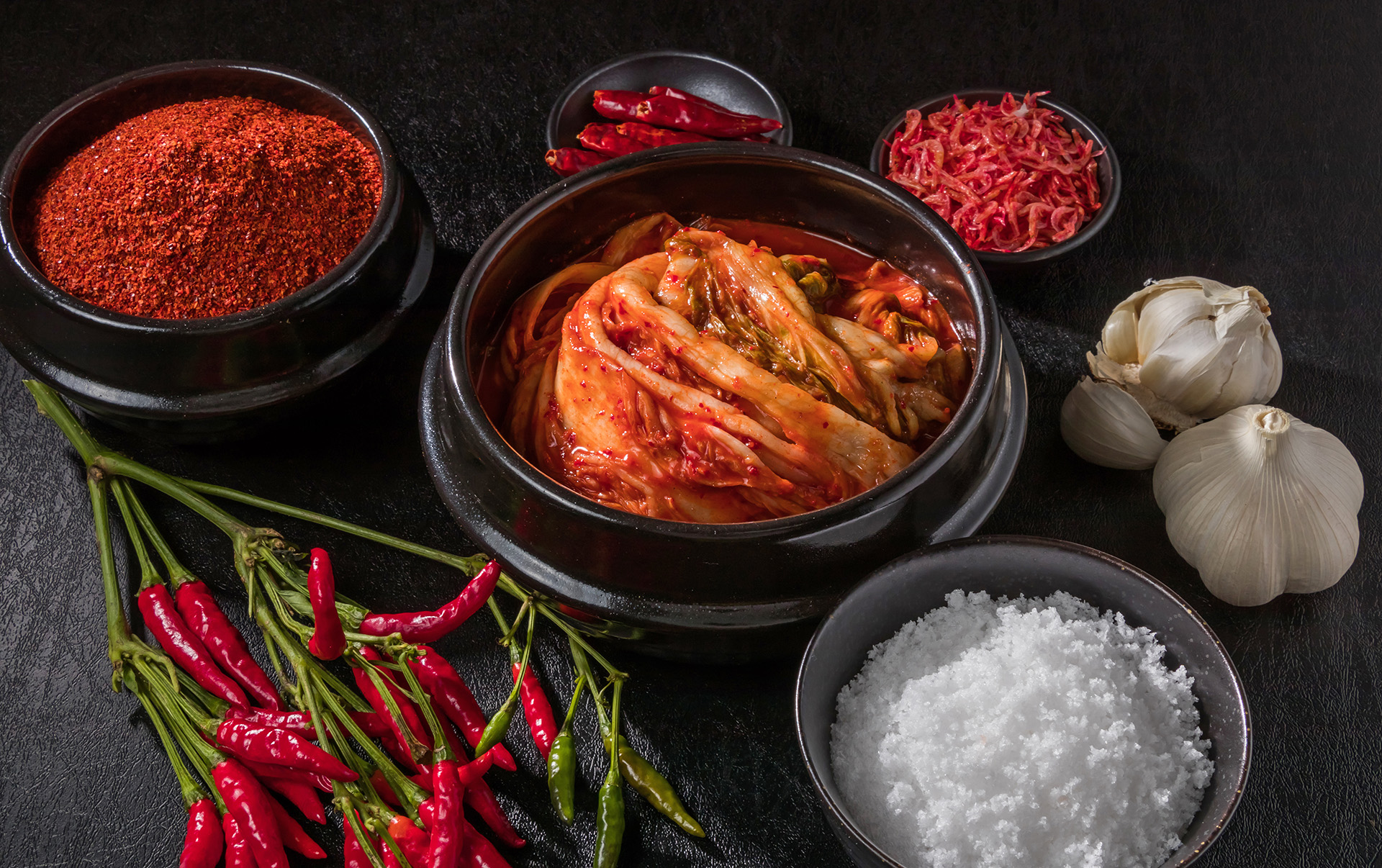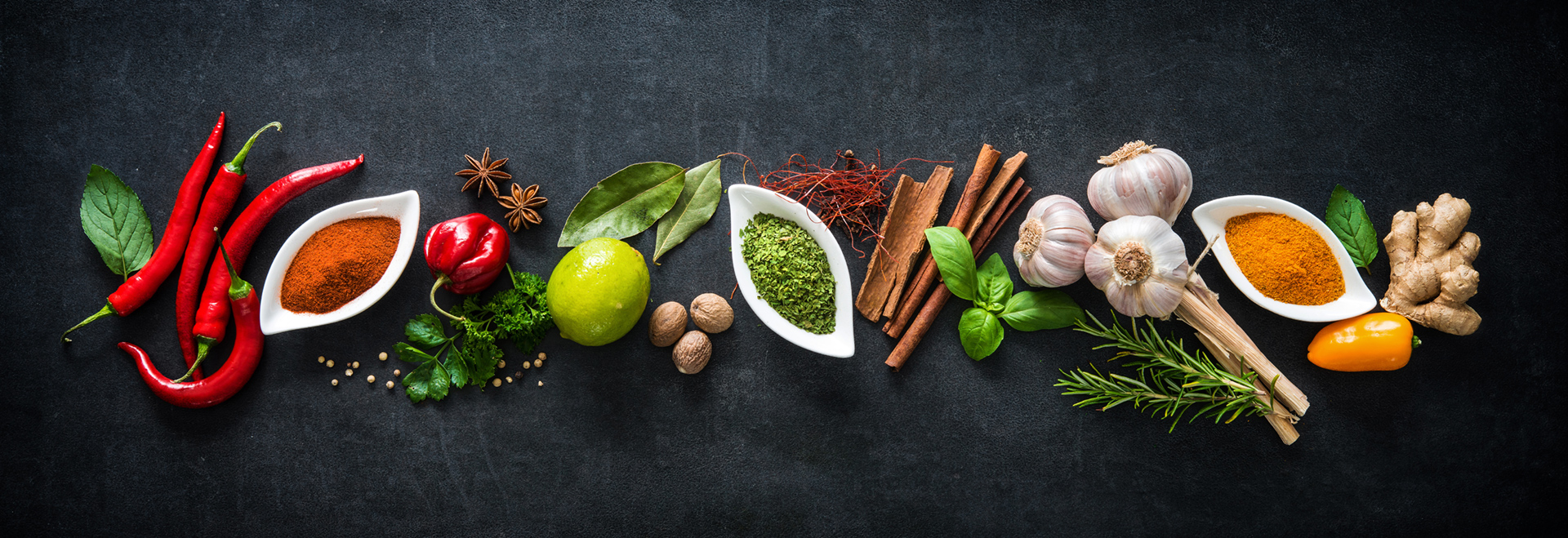
Trends in savoury and flavours
Flavouring is an ever-evolving art that closely follows the trends in the food and beverage industry. Creating meaty flavours without adding meat is one of the main trends in savoury flavouring following the shift to plant-based food and the craving for bold and multi-sensory flavours. The meat industry is adapting to this trend by creating meat hybrids and experimenting with surprising new meat flavours. In this article we will be looking at some of the trends in savoury flavouring.
First on the list on Innova Market Insights’ Top Trends 2019 is “Discovery – The Adventurous Consumer: Exploring bold and multi-sensory food experiences.” Savoury may be the food category with the greatest potential to follow this trend. Bold and multi-sensory flavours are mostly associated with ethnic cuisine as well as deep, meaty umami flavours. However, hand in hand with the Discovery trend, as number two on Innova’s trend list, goes “The Plant Kingdom”. How can the savoury food industry combine these two somehow conflicting desires?
“The future of flavour lies in creating healthy dishes without giving up satisfying taste”, said Amanda Topper, associate director of food service research at Mintel. “These flavours can be achieved through the methods that are typically used to cook meats, such as curing, grilling, and smoking.”
Smoked goes vegetarian
And this is exactly what is happening. ‘Smoked’ is one of the fastest growing food flavours and it reaches far beyond meat. Fish, beans and vegetables nowadays all come with smoky tones. Food manufacturers can, for example, use dark yeast products to add roasty, meaty flavour notes to vegan products. Vegan bouillons with beef, chicken and fish taste are another alternative to deepen the flavours of plant-based food.
Coffee flavoured meat
Other trending flavours are coffee and tea, now reaching beyond drinks and dairy. Mintel reports: “Coffee continues to be a huge innovation area for the drinks category. However with the flavour becoming so established and frequent, shifting it into the seasoning or sauce categories could be a white space opportunity for flavour brands.” But this trending flavour is reaching even further than that. At IFFE last month the surprising combination coffee and ham was presented, and meat now also comes with tones of Indian chai.
Hybrid meat a potential
Looking further at the shifts in the meat industry so-called hybrid meat is popping up. In a hybrid product a percentage of the meat, up to 50-50, is replaced with plant-based ingredients, such as grains and vegetables. Since there is a large amount of real meat in these products, taste and mouth feel deviate less from the real meat experience; something that makes the switch easier for consumers that simply want to reduce the amount of meat and not go fully vegetarian. Experts in this field believe hybrid meat will become mainstream in the future.
Fermanted and sour food
Fermentation has made a come-back in the west over the past few years and interest keeps growing. Fermented products fit right into the two trends plant kingdom and bold flavours with its probiotic benefits and strong taste. Fermented soybean products are increasingly popular, including miso and natto from Japan and tempeh from Indonesia. Pickles made via fermentation, particularly more exotic variants such as kimchi from Korea, is another example. Sour is a particularly trending flavour this year, thanks to the popularity and influence of Korean, Filipino and Persian cuisines.
Snacks feeding the mind
Recent research supports a strong connection between gut health and cognitive functions. Looking beyond the gut-friendly fermented foods, the market offers an increasing number of healthy snacks and drinks featuring ingredients that support both a healthy gut and a clear mind such as anti-oxidants, CBD oil, MCT oil and adaptogenic herbs and mushrooms. “Snacking is no longer the optional extra, but the definitive occasion”, according to Innova that report that 69% of millennials are replacing meals with snacks. Healthy snacking options show the fastest growth for new product development. Seaweed snacks, tahini and hummus, and the plant-based tuna Ahimi are other trends worth mentioning.
In 1950, the average home kitchen held 10 spices, seasonings and extracts. Today that number is over 40. Exotic spice blends and international spreads and sauces are approachable avenues for consumers to satisfy their growing curiosity to enjoy new tastes. “Spice blends are an area of opportunity for brands as they can take some of the guesswork out of cooking,” said Caleb Bryant, senior food service analyst at Mintel.
Togarashi is a common Japanese spice blend that is often included in soups and proteins. In fact everything Japanese is a big trend this year making the sixth basic taste kokumi, a confection of the Japanese words for “rich” and “taste”, more recognized in the industry. The list of trending international spices is never ending but to mention a few more we have more about our wide ingredients offer.
Exotic spices and spreads
In 1950, the average home kitchen held 10 spices, seasonings and extracts. Today that number is over 40. Exotic spice blends and international spreads and sauces are approachable avenues for consumers to satisfy their growing curiosity to enjoy new tastes. “Spice blends are an area of opportunity for brands as they can take some of the guesswork out of cooking,” said Caleb Bryant, senior food service analyst at Mintel.
Togarashi is a common Japanese spice blend that is often included in soups and proteins. In fact everything Japanese is a big trend this year making the sixth basic taste kokumi, a confection of the Japanese words for “rich” and “taste”, more recognized in the industry. The list of trending international spices is never ending but to mention a few more we have Berbere, an Ethiopian spice blend, combining ginger, basil, chili peppers and garlic and Ras el Hanout, a spice mix from North Africa, that includes cardamom, cumin and ginger. For Middle Eastern cuisine there is Muhammara, a hot pepper dip common in Syria and Turkey that combines peppers, walnuts, oil, breadcrumbs, lemon and various spices and Lebanese Toum that features salt, lemon juice, oil and garlic. Barentz can support you in your product development with flavour enhancing and healthy ingredients that meet the needs of today’s consumers. Contact your local Barentz representative to learn more about our wide ingredients offer.



